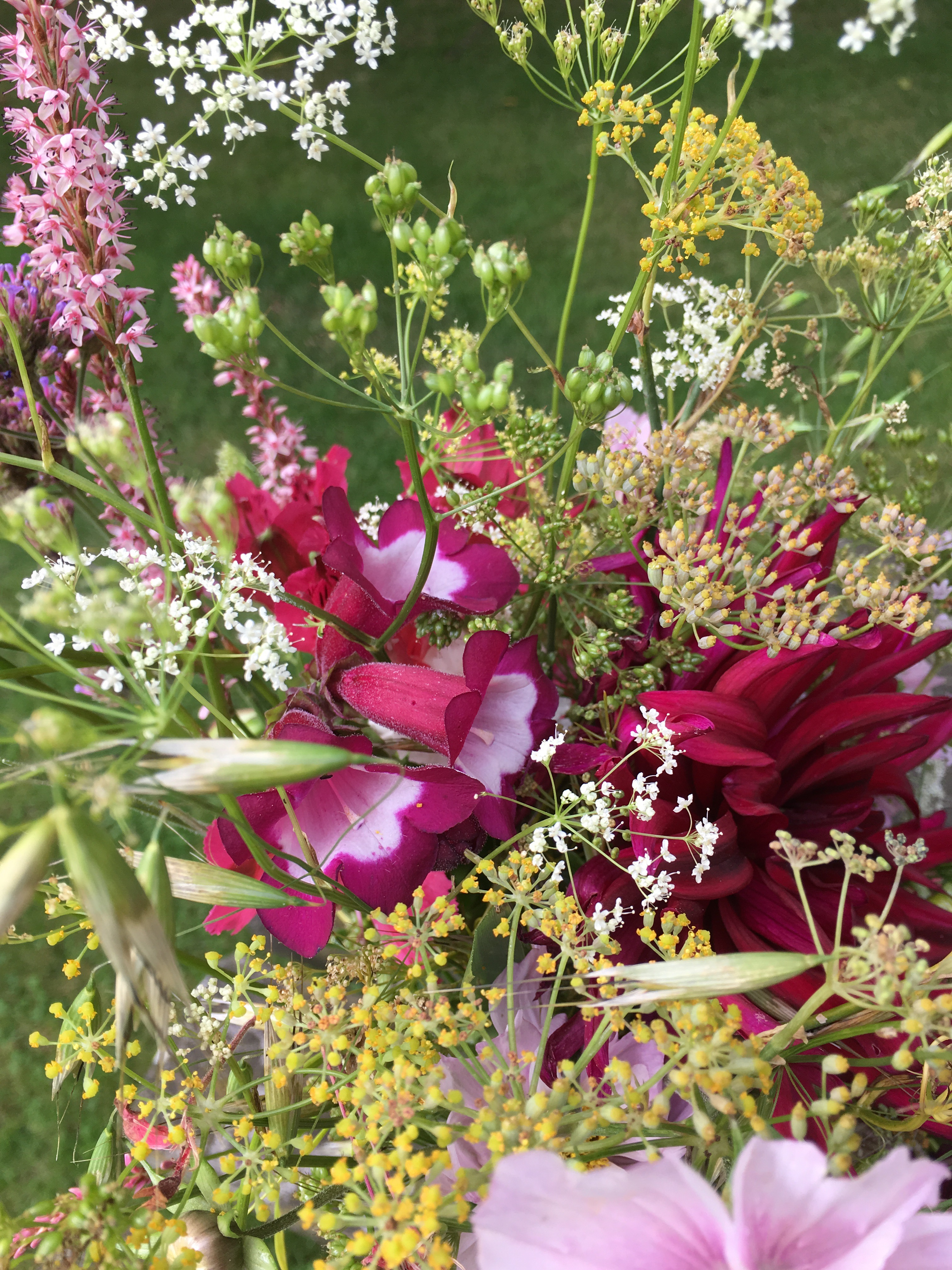SECRET GARDENS OF EAST ANGLIA
Barbara Segall. Photography by Marcus Harpur
Frances Lincoln £20. Hardback. Published 7th September 2017.
It’s impossible to resist dipping into the pages of any book with the words “secret” and “garden” in the title.
We all love peering over the garden gate to get a glimpse of other people’s property.
And in Secret Gardens of East Anglia, Barbara Segall is our excellent guide, taking us straight down the drive and through the front gates of 22 privately owned gardens.
It is quite a revelation. We see sumptuous planting, grand sculpture, rose parterres, moated gardens, and wildflower meadows galore! A real treat – in words and pictures.
Here is just a flavour of some of the glorious gardens featured.
Wyken Hall, Stanton, Suffolk

Photo credit Marcus Harpur. Perfectly co-ordinated, one of Wyken Hall’s peacocks is poised beneath a blue wooden pergola covered in climbing Rosa Blairii Number Two. The pergola is reminiscent of one at Bodnant in Wales. Owners Kenneth and Carla Carlisle have created a sumptuous rose garden, favouring highly-scented old rose varieties with soft coloured perennials such as delphiniums, astrantia and artemisia. The sound of water and the scent of roses always draws me in. I could picture myself sitting in this beautiful garden on a hot, sunny summer’s day. Yes, I would be quite happy here!
Columbine Hall, Stowupland, Suffolk

Photo credit Marcus Harpur. In my opinion, the most romantic of the gardens featured. I’ve long been entranced by the walled kitchen garden which I first spotted on twitter. Head gardener and estate manager Kate Elliott ( @columbinehall) has worked here for 20 years and rightly describes the garden as her “pride and joy.” Blue-grey paintwork used for gates, bridges and obelisks caught my eye, along with the planting scheme of silver and blue-mauve through to pink. Purple kales such as Cavolo Nero, Redbor and Rouge de Russie are set amongst the silver leaves of globe artichokes. I wasn’t surprised to read the owners’ comments :”We pick from the Kitchen Garden only with Kate’s permission, so as not to upset the colour co-ordinations or symmetry.” A rare glimpse behind the scenes into the work and dedication that goes into creating a garden such as this.
Elton Hall, Elton, Cambridgeshire

Photo credit Marcus Harpur. Home to Sir William and Lady Proby who chose to make a modern garden, rather than recreate the past. The stately house has been in the Proby family for more than 300 years. It’s fascinating to see how the contemporary design of the fountain and the pyramid topiary is set against a Gothic style house with turrets and castellations. Proof that a modern style can work in a setting that’s steeped in history.
Wood Farm, Gipping, Suffolk

Photo credit Marcus Harpur. The photograph shows irises, cornflowers, mounds of lavender and box. On the other side of the property, the house appears to drift on a sea of white ox-eye daisies. The golden centres of the daisies are an exact match with the colour of the 500 year old Suffolk farmhouse. A very pretty house and garden and I would love to have the chance to ramble along that garden path.
I must mention Ulting Wick, Ulting, Essex. Long on my special-places-to-visit list, the owners Bryan and Philippa Burrough have planted 10,000 tulips in the Old Farmyard garden. A particular feature of the garden is the bold and jewel-like colours set against the black paintwork of three listed barns. In spring, the bulbs take centre stage, but in late summer, it is the dahlias and bronze-leaved Ensete that turn up the heat. The garden has opened to the public for the past 14 years in aid of the National Gardens Scheme. After reading Barbara’s book you will want to follow Philippa’s garden tweets @UltingWick. The sheer amount of work that goes into creating a garden such as this is highlighted in the stunning photos in the book.

Barbara is a most entertaining “host” on what feels like the best holiday road trip /garden visit tour- ever. Reading this beautiful book is like walking alongside Barbara. She expertly points out the secret areas and the special treasures in each garden. The history and the background information is fascinating. And it feels such a treat to be “let in” to these treasured, private spaces.
It’s a joy to read the stories behind the gardens and to “meet” the people who own them. And if the book has whetted your appetite- all but one of the 22 gardens are open to visit – on selected days of the year or by appointment only.
BARBARA SEGALL is a well-known horticulturist and garden writer. I’ve always looked out for her writing in the English Garden Magazine and also on the Richard Jackson’s Garden website. She is editor of The Horticulturist, the journal of the Chartered Institute of Horticulture, also editor of Herbs magazine for the Herb Society. Barbara lives in Suffolk and her first book for Frances Lincoln was Gardens by the Sea with photos by Marcus Harpur’s father, Jerry. Barbara’s blog is http://www.thegardenpost.com.
MARCUS HARPUR . I’ve know Marcus since about 1992 when he left book publishing to join his father to form the Harpur Garden Library. Sadly , Marcus died on August 6th this year after 18 months of illness. He saw finished copies of the book, but poignantly didn’t live to see it go on sale. When I spoke to him last, he described working on the book as “A joyful and satisfying project.” He was a much loved and well respected photographer whose skill in capturing the light and beauty in a garden is plain for all to see in this his final book.
Pre-order on Amazon at amzn.to/2oqHgM2
Thank you to Frances Lincoln/ Quarto Group Books for supplying this advance copy for review.





























